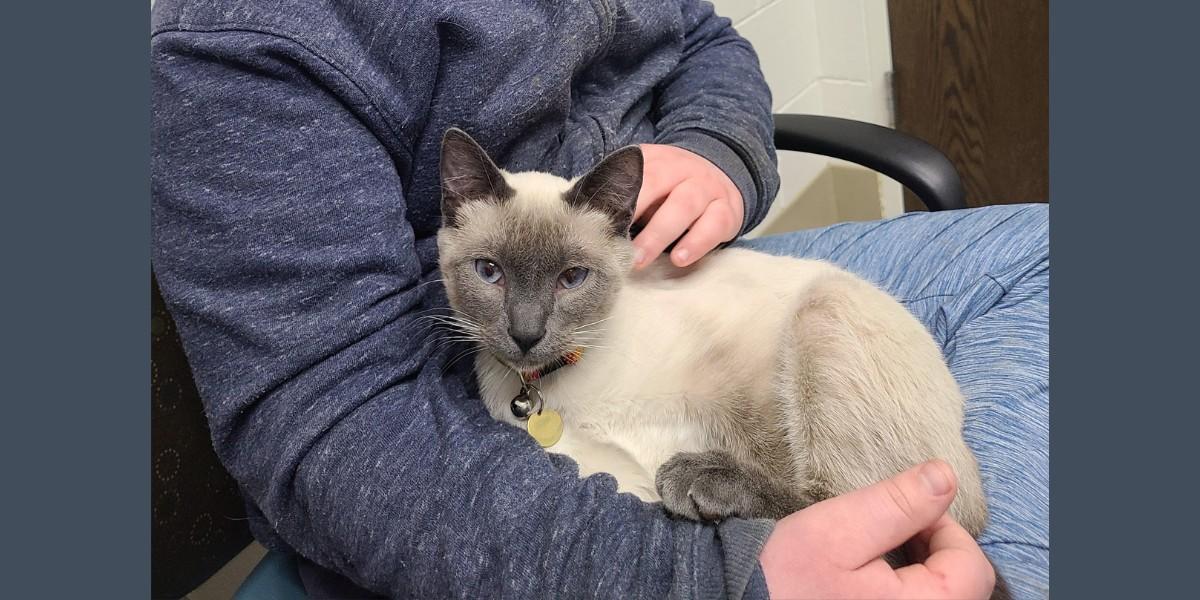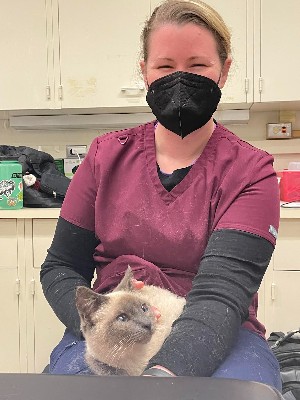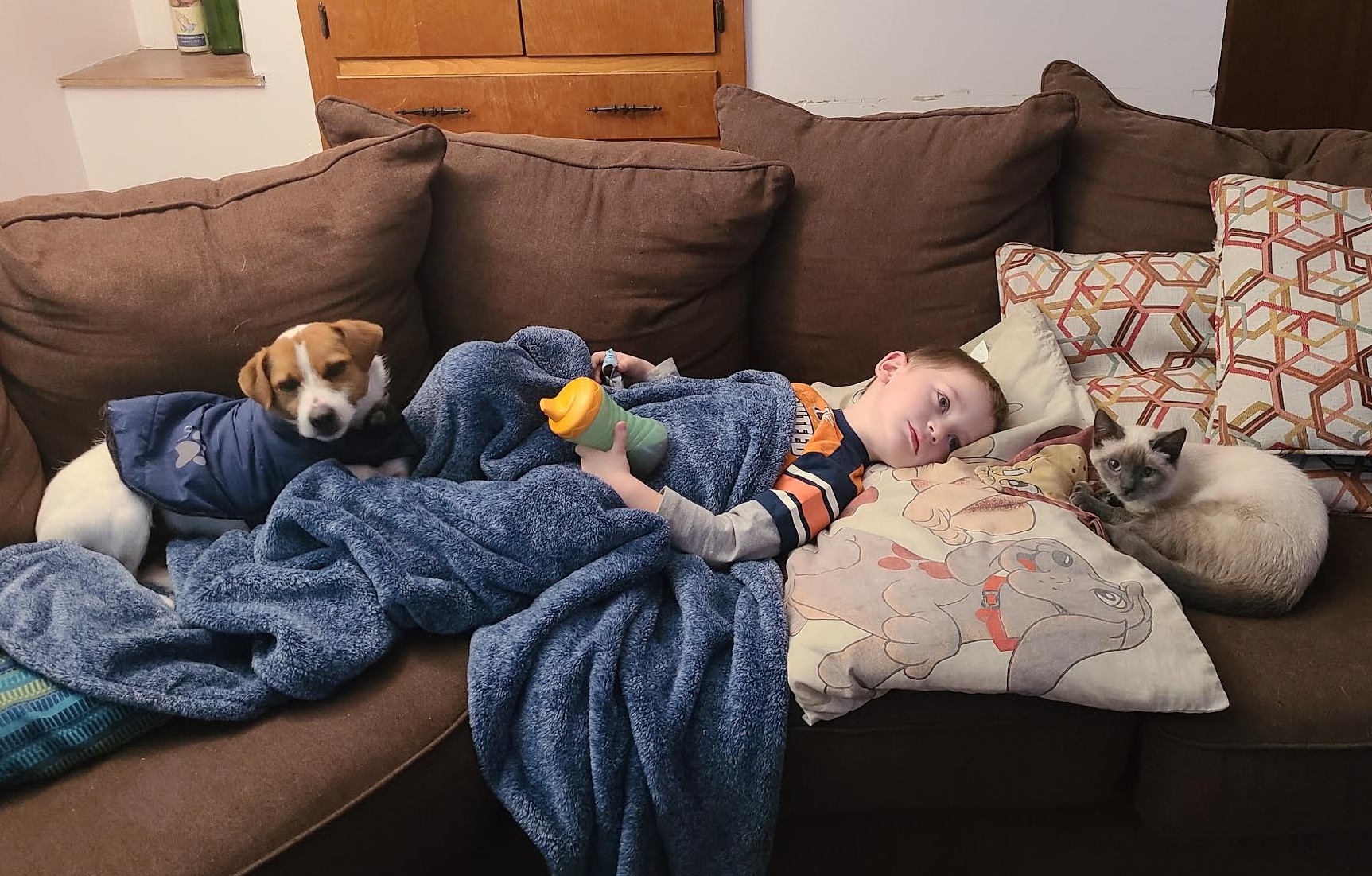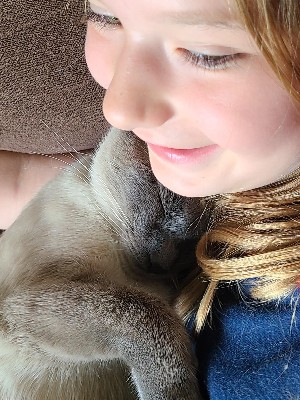A second shot at life
VMC fund helps rescued kitten get life-saving surgery

VMC fund helps rescued kitten get life-saving surgery
Walter, a rescued kitten diagnosed with a heart condition, rests in the lap of one of his adopter's children. Photo courtesy of Sara Whisman.
When Walter arrived at Glacial Lakes Humane Society in Watertown, S.D., it was business as usual. Within days of arriving, the domestic shorthair-Siamese kitten underwent routine neutering to get him ready for adoption.
But while he was under anesthesia, his care team noticed Walter struggled to breathe. When they reversed the sedation, his breathing went back to normal. The team recognized it as a sign Walter may need extra help.

The Humane Society asked Sara Whisman, a veterinary technician at West Side Animal Clinic, the local clinic that performs spays and neuters for the shelter, if she could take the kitten home.
They said, “If we adopt him out, we don’t think he will get the client care he needs,” Whisman says. “At first, we thought he would not be with us very long.”
Whisman didn’t give up on Walter. She took him to West Side Animal Clinic where tests revealed that Walter appeared to have an enlarged heart and fluid in his lungs. His pelvis was also broken.
“We realized there might be something we could do,” she says.
Whisman contacted clinicians at the University of Minnesota (UMN) Veterinary Medicine Center (VMC) and asked if they thought they could intervene. It still wasn’t clear what exactly the issue with his heart was, so Whisman drove Walter nearly four hours to the VMC for a more pointed diagnosis.
An echocardiogram revealed that 4-month-old Walter had a common––and treatable––heart condition. The diagnosis, called a patent ductus arteriosus (PDA), is a hole within the heart that causes the organ to work harder than it needs to.
“It can cause early death, but when it’s treated early, it’s a curable disease. There are a number of devices we can use to plug the hole, then it’s good as new,” says Dr. Chris Stauthammer, a professor of cardiology in the Department of Veterinary Clinical Sciences at CVM and section head for cardiology at the VMC.
While waiting for a follow-up appointment and then the surgery that would ultimately save his life, Walter slowly became part of Whisman’s family.

“He’s the most personable cat I’ve ever met,” Whisman says. “He wants to be on your lap all the time.”
Her three kids fell in love with Walter. The kitten nestled in their laps while they played video games. He snuggled and played with his foster brother, a dog named Max, and tried to keep up with the two other newly adopted kittens living with the Whismans.
Finally, Walter was able to undergo surgery at the VMC. The procedure would require Stauthammer to place a coil in Walter’s heart through a catheter in his artery. The cost of surgery would be expensive, but half of it was covered by the VMC Shelter & Rescue Animal Fund.
With the help of donations, the fund subsidizes the cost of life-saving procedures for animals living in a shelter. Over the past fiscal year, the fund has helped nine shelter animals, including Walter, get the care they needed to live a normal life.
“To use the fund, the perceived treatment has to have a good prognosis. We’re curing the animal, not just extending survival by a few months,” Stauthammer says.

He adds that it’s common to see curable heart conditions in rescue animals. Often, it’s why the animals were surrendered in the first place. Either pet owners cannot afford the procedure or see it as an unnecessary burden.
“Without the procedure, his estimated survival time would be a year. That’s why this fund is so great, we were able to give Walter a full life,” Stauthammer says.
Today, Walter is a rambunctious, cuddly kitten just over a year old. Before his surgery, he’d watch the two other kittens he lived with chase each other up and down the cat tree in Whisman’s living room. Now, he gets to join in.
“Before you could tell that he wanted to do those things but he didn’t have the energy. It’s like he’s living his second kittenhood now,” Whisman says. “He would have lived a very short life if not for this assistance. It’s changed his life dramatically.”